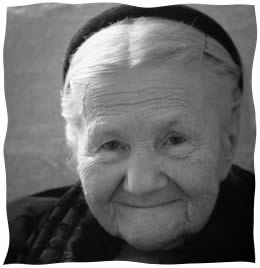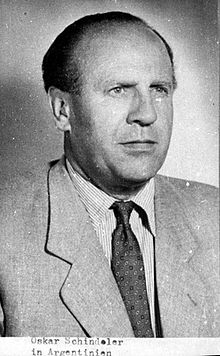 |
| (http://www.chabad.org/theJewishWoman/article_cdo/a) |
A nurse walked into the ill-stricken Warsaw Ghetto in Poland in the year 1943 to check for typhoid fever. It appeared to the guards that she was asking the parents about their children and the symptoms of the disease. But, unbeknownst to the guards, she was pleading with them to let her take their children away from the Ghetto. She wanted them to escape their certain deaths and go with her into hiding so they would be safe. But, as it turned out, this woman was not an ordinary nurse. In fact, she was not a nurse at all, merely a life-saving woman who pretended to be a nurse so she could rescue the children. Irena Sendler, born on February 15, 1910 in Otwock, near Warsaw, Poland, was raised by her father Stanislaw Krzyzanowski until 1917 when he died of typhoid fever. As an adult, Sendler married second husband Stefan Zgrzembski and took up the occupation of a social worker until 1943, when she saw the Nazi's begin to invade Poland and trap Jewish people in the infamous Warsaw Ghetto. At this time, she chose to act upon her instinct and began hiding Jewish people in her home until she couldn't fit another soul in her house. She then realized the main people in danger were the children inside the Ghetto, and thought that she couldn't bear to see them spend another day trapped inside those walls, so she must try to save and rescue them. That decision and that moment was what turned Irena Sendler from your everyday social worker to a woman who dared to break rules at the most corrupt of times and risk her own life in order to save others and stand up for what she believed in, and who ended up saving nearly 2,500 Jewish children's lives. Without the fame, fortune and media exposure that most hero's have, Irena Sendler's extreme and ongoing bravery, care and constant concern for others and selflessness was what made her a true hero and a role model of what we as a society should strive for in our everyday lives.
 |
| A young Irena Sendler (http://en.wikipedia.org/wiki/Irena_Sendler) |
Irena Sendler's extreme and ongoing bravery was one of her most prevalent heroic traits that she exemplified and showed during the most corrupt of times. Instead of just feeling pity and empathy for the Jewish population while being more concerned for her own life, she immediately stepped in and took action. "She and her team of 20 entered the ghetto under the pretence of checking for a typhoid outbreak. The team tried to convince parents to let them take their children away from a certain death." (Mickel). It was extremely dangerous to try to help the Jewish people during that time. Sendler and her team had to be very brave and sneaky to try to get the children out safely. She had to have known the dangers, but she did it anyway, showing her bravery and willpower. In a rare interview, Sendler described how she acted quickly upon her instinct to help the Jewish population, further showing her bravery. "When you know that something is basically at stake, like real life, you do everything to save it. You don't talk about it and discuss it. You do it, she told Wieler." (Sendler, Irena). Once she saw the horrible things happening in her home, as shown through this quote, she didn't hesitate to act. Helping the Jewish people was extremely dangerous, but she jumped right in and tried to help, and this took extreme bravery. Her extreme bravery demonstated how she was willing to put herself in danger for the benefits of others and is a crucial heroic trait.
Her care and constant concern for others came out at the most desperate and helpless times and she did whatever she could to help them at any cost, including her own life. The ongoing care and concern she had for the chilren she saved continued throughout and after the war was over. "She kept a list of all the smuggled children in a jar beneath a tree in a friend's garden. When the war was over she tried to reunite the children with parents who had survived the war." (Mickel). Not only did she save nearly 2,500 children, she cared so much about them even after they were safe and out of harms way. So much so that it became her mission to reunite them with their parents, most of whom died. She didn't feel complete just saving them and offering a better life, because, she knew that the children could be happier if they were with their families. She cared so much that she wanted to make sure they got home to the ones they loved. In an interview with ABC News, Sendler described how she saw the turmoil begin and how her heart immediately reached out to those in need. "When the war started, all of Poland was drowning in a sea of blood, but most of all it affected the Jewish nation. And within that nation it was the children who suffered most. That's why we needed to give our hearts to them." Sendler said." (Sciutto). Sendler saw the devastation and acted without thinking. As shown by this quote, as soon as she saw what the Jewish population and Poland were going through, she acted immediately upon her instinct, and that was very dangerous but she did it anyway because of the deep pain and caring nature she felt for them. Only one of her many heroic traits, her caring nature shows how she is a hero. She is a hero because of her ability to constantly put others first, act with bravery and care about the people she helped, and she let her care and worry for the Jewish community guide her in her actions of helping others.
 |
| The Warsaw Ghetto (http://en.wikipedia.org/wiki/Warsaw_Ghetto) |
Although her heroism is shown with these other traits, her selflessness is what made her stand out and what guided her throughout her entire life. Only one of her selfless moments, her selflessness is especially shown when she was placed in a predicament where she was pressured to give up information about her work against the Nazi regime. "The same year, Sendler was captured and tortured by the Gestapo. They broke her feet and legs but she still refused to reveal the identities of her helpers or the children." (Mickel). Her refusal to give up her helpers and rescued children, even after they subjecting her to enormous amount of pain, shows that she cared more about the fact that the people she cared about were safe than her own well-being. She was put in the face of death and had the opportunity to get out of it by giving up names, but her sheer willpower and determination to save others, not herself prevailed, proving that the people she cared about and children she helped were more important to her than her own life. Even her daily actions reflected how selfless and determined she was to help and save others. "When the city's Jewish population was walled into the infamous Warsaw Ghetto and sealed by checkpoints, Sendler organized a secret humanitarian program among her friends and colleagues. She brought in food and medical supplies, aided by her municipal-government pass that gave her relatively easy access through the heavily armed checkpoints." (Irena Sendler, Newsmakers Vol. 2. Detroit: Gale, 2009. Gale Biography in Context). Sendler forming the organization showed that she was thinking of others, the people in the Ghetto, more than herself and her own safety because she could have easily been caught, captured and transported to a concentration camp. Also, going inside the Ghetto could have exposed her and made her ill with deadly diseases that were spreading in the ghettos. But she believed that helping the people inside was worth risking her personal health and wellbeing. Her selflessness and willingness to constantly put others ahead of is a trait she embodied at the most dangerous and perilous of times, proving how much of a true hero she is.
 |
| Oskar Schindler,man who Sendler is compared to. (http://upload.wikimedia.org/wikipedia/en/thumb/3/3) |
As Sendler once said, "I saw the Polish nation drowning," Sendler would later say about her heroism--a term she disdained--according to the Times of London. "And those in the most difficult position were the Jews. And among them those most vulnerable were the children. So I had to help." (Irena Sendler." Newsmakers. Vol. 2. Detroit: Gale, 2009. Gale Biography In Context). Through her brave, caring and selfless actions, Irena Sendler has proven herself to be a true hero and a symbol that we can and should all look up to in times of need and desperation. Her daring moves of venturing into the Warsaw Ghetto and always acting upon her instinct to save others fully solidifies her bravery. Also, her constant efforts to help the children, even after the war was over and her ability to connect with those in trouble exposed her raw caring and concerned nature. But, ultimately, her true stars were revealed when she was captured and tortured to the brink of death by the Gestapo, the German Nazi police. Even after being exposed to the deepest depths of pain and suffering, she refused to give up any information at all about her work and helpers. This truly exhibits how selfless and willing she is to risk her life for the well-being and safety of those she cared about. I believe that no one can show us how much of an inspiration she was except her in her own words. "If you see a person drowning," she told Norman Conard in NEA Today, "you must jump into the water to save them, whether you can swim or not." (Sendler, Irena). We as a society need people like her who are willing to "jump in the water," or do something great if we "see someone drowning", or someone struggling and in pain, even if we can't "swim", or don't know if we are going to make it out alive. This is exactly what she did when she saved the 2,500 Jewish children. It was an extremely brave and selfless act that could have, and almost did, get her killed. But like she said, when you see someone "drowning", you can't hesitate to jump in and help them. Once her heroism was found out, she began to be called the "female Schindler, although she saved twice as many lives as the German industrialist who was made famous by the 1993 film" (Mickel). As Elzbieta Ficowska, one of the rescued children once said: "Irena represents the often forgotten truth, that no one should be indifferent," Ficowska said. "Irena became a symbol. A symbol of something very good. A symbol of undeniable authority. In today's world of eroding values in which role models crumble one after another, it's particularly the young who need people like Mrs. Sendler." (Scuitto, Jim). She was a symbol of hope and goodness then, and she will continue to be a symbol and a hero now and forever.
Web. 10 Dec. 2012.
"Irena Sendler." Newsmakers. Vol. 2. Detroit: Gale, 2009. Gale Biography In Context. Web. 10Â Dec. 2012.
"Irena Sendler." Newsmakers. Vol. 2. Detroit: Gale, 2009. Gale Student Resources In Context. Web. 10 Dec. 2012.
Mickel, Andrew. "Irena Sendler." Community Care 1723 (2008): 18. Biography Reference Center. Web. 10 Dec. 2012.
Scuitto, Jim. "Holocaust Hero Turns 97." ABC News. ABC News Network, 15 Feb. 2007. Web. 10 Dec. 2012.
"Sendler, Irena." Encyclopedia of World Biography. 2nd ed. Vol. 28. Detroit: Gale, 2008. 318- 320. Gale Virtual Reference
Library. Web. 10 Dec. 2012.
Page created on 1/10/2013 12:00:00 AM
Last edited 1/10/2013 12:00:00 AM
